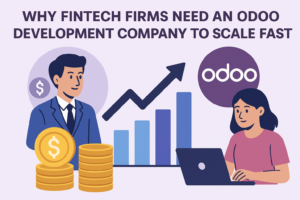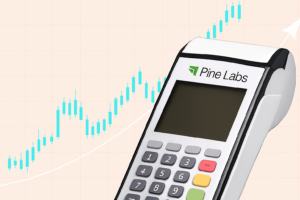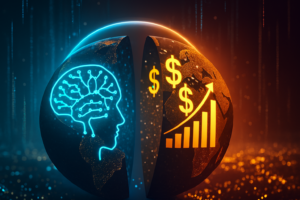Google’s AI payment framework is designed to be open and collaborative rather than a closed ecosystem. The initiative has already attracted support from a diverse network of partners, including the Ethereum Foundation to ensure blockchain compatibility, Salesforce to enable enterprise-level integrations, and companies like American Express and Etsy that bring in global finance and retail perspectives. In total, more than 60 organizations are working alongside Google to make the system interoperable, secure, and developer-friendly. This collaborative approach strengthens confidence that the AI stablecoin platform will not remain a siloed experiment but evolve into a scalable solution with meaningful applications in real-world commerce.
AI Meets Crypto: Google’s New Platform Brings Stablecoin Integration

Google has launched a new AI platform with stablecoin support, partnering with Coinbase to enable faster, more secure, and autonomous payments between AI applications. This move marks a major step in the convergence of AI and blockchain finance.
In a landmark move that blends two of the most transformative technologies of our time, Google has launched a new AI platform with integrated stablecoin support, making digital asset transactions faster, more secure, and more accessible. Partnering with Coinbase, Google aims to position itself at the forefront of the convergence between artificial intelligence and financial technology.
This development doesn’t just mark another experiment in payments. It signals a broader shift: tech giants are increasingly acknowledging the role of blockchain and digital currencies in the future of finance. For businesses, developers, and investors, Google’s step into the AI-stablecoin ecosystem could accelerate innovation while reshaping global transaction flows.
Why This Matters
The global financial system is evolving at breakneck speed. As AI agents handle more tasks autonomously, from logistics to digital interactions, the next logical step is enabling them to transact value on their own. Traditional payment systems, while efficient, can be slow, costly, or fragmented across borders. Stablecoins bridge that gap by providing near-instant, low-cost, and globally compatible settlement.
By integrating stablecoins into its AI payments platform, Google is addressing three critical needs of the digital economy:
-
Speed: Transactions happen in seconds, not days.
-
Flexibility: Payments are no longer confined to traditional rails.
-
Trust: Stablecoins offer price stability compared to volatile cryptocurrencies.
The result? AI agents can “talk” to one another financially — settling transactions, allocating resources, or even negotiating payments — without requiring constant human intervention.
The Coinbase Connection
To make this leap possible, Google partnered with Coinbase, one of the most recognized names in cryptocurrency infrastructure. Coinbase has been building its own AI-driven crypto payments system, aligning perfectly with Google’s ambition to create seamless AI-to-AI transactions.
Erik Reppel, head of engineering at Coinbase’s developer platform, emphasized the importance of interoperability:
“We’re all working to figure out how we can make AI transmit value to each other,” he told Fortune.
The partnership ensures that Google’s platform can process stablecoin transactions across diverse ecosystems while maintaining compatibility with existing fiat-based rails. For users, this means payments can move effortlessly between AI-driven apps, credit card networks, and stablecoin wallets.
Building on Broader Collaborations
How AI Agents Will Transform Payments
At the heart of Google’s innovation lies the use of AI agents — autonomous software systems capable of decision-making. Until now, these agents primarily exchanged data. With the new agent-to-agent payments protocol, they can also exchange value.
For example:
-
An AI-driven supply chain system could automatically pay a logistics provider once goods are delivered.
-
A digital marketing AI could purchase ad space on behalf of a business, executing payment instantly.
-
Consumer-facing chatbots could complete purchases on behalf of users, integrating stablecoin wallets for smooth checkouts.
James Tromans, head of Web3 at Google Cloud, explained the design principle:
“The way we built it is from the ground up to factor in both heritage and existing payment rail capabilities as well as forthcoming capabilities such as stablecoins.”
In short, the framework ensures AI-driven payments are not only secure but aligned with human intent.
Expanding the Web3 Footprint
This isn’t Google’s first step into blockchain territory. Just last month, Google Cloud announced the Google Cloud Universal Ledger (GCUL), its own Layer-1 blockchain protocol designed to simplify payments for enterprises and financial institutions. Currently in private testnet, GCUL is expected to enter public rollout soon.
Combined with the new AI-stablecoin platform, these moves position Google as a serious contender in the Web3 and payments space, rivaling efforts from firms like Apple, Meta, and Shopify — all of which are exploring stablecoin integrations.
The Bigger Picture: AI Meets Finance
This development comes at a time when the U.S. administration is becoming increasingly friendly toward crypto and global momentum is shifting rapidly toward digital payments. Stablecoins, now a trillion-dollar asset class, are transforming the way businesses, governments, and consumers transact. For Google, the stakes could not be higher. By merging AI with blockchain finance, the company strengthens its competitive edge against rival tech giants, attracts developers eager for interoperable AI-powered financial tools, and positions itself as a standard-setter in how AI will manage value in a digital-first world.
Opportunities and Challenges Ahead
The opportunities are massive:
-
Ecosystem growth: Developers gain tools to create smarter applications.
-
Cross-border commerce: Stablecoin-powered AI transactions could ease frictions in international trade.
-
Merchant adoption: From Etsy sellers to global enterprises, stablecoins can cut costs and expand payment options.
But challenges remain:
-
Regulatory uncertainty: Governments worldwide are still drafting rules for stablecoins and AI finance.
-
Security risks: Autonomous agents handling money raise questions of accountability.
-
Market adoption: Convincing traditional merchants and consumers to trust AI-stablecoin transactions will take time.
What It Means for the Future
The Google AI stablecoin platform represents more than a product launch; it’s a blueprint for the financial future. As AI agents increasingly handle business processes, from negotiations to logistics, they will also need the ability to transact. Stablecoins make this possible by marrying AI efficiency with financial stability.
Over the next few years, expect:
-
Faster adoption of AI-driven payments across industries.
-
Greater competition as Apple, Meta, and Shopify scale their own stablecoin solutions.
-
A potential regulatory race to ensure that innovation is balanced with consumer protection.
For now, Google’s entry into the field places it at the forefront of a financial revolution, where AI and blockchain converge to redefine money movement.
Conclusion
Google’s new AI platform supporting stablecoins — built in partnership with Coinbase and supported by over 60 global organizations — signals a turning point in the evolution of payments. It addresses critical needs of speed, flexibility, and trust while expanding Google’s influence in both AI and Web3.
By enabling AI agents to transact autonomously, the platform lays the foundation for a future where digital transactions happen seamlessly in the background of everyday life. It’s ambitious, it’s forward-looking, and it underscores one truth: the worlds of AI and finance are no longer separate — they are converging at lightning speed.












